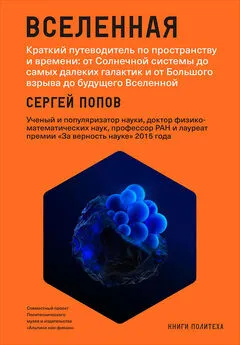Джордж Массер - Нелокальность: Феномен, меняющий представление о пространстве и времени, и его значение для черных дыр, Большого взрыва и теорий всего
- Название:Нелокальность: Феномен, меняющий представление о пространстве и времени, и его значение для черных дыр, Большого взрыва и теорий всего
- Автор:
- Жанр:
- Издательство:Альпина нон-фикшн
- Год:2018
- Город:Москва
- ISBN:978-5-9614-5176-4
- Рейтинг:
- Избранное:Добавить в избранное
-
Отзывы:
-
Ваша оценка:
Джордж Массер - Нелокальность: Феномен, меняющий представление о пространстве и времени, и его значение для черных дыр, Большого взрыва и теорий всего краткое содержание
Нелокальность: Феномен, меняющий представление о пространстве и времени, и его значение для черных дыр, Большого взрыва и теорий всего - читать онлайн бесплатно ознакомительный отрывок
Интервал:
Закладка:
Baker, David John. “Against Field Interpretations of Quantum Field Theory.” The British Journal for the Philosophy of Science 60, no. 3 (August 11, 2009): 585–609.
Balasubramanian, Vijay. “What We Don’t Know About Time.” Foundations of Physics 43, no. 1 (January 2013): 101–14.
Balasubramanian, Vijay, and Per Kraus. “Spacetime and the Holographic Renormalization Group.” Physical Review Letters 83, no. 18 (November 1, 1999).
Balasubramanian, Vijay, Per Kraus, Albion Lawrence, and Sandip P. Trivedi. “Holographic Probes of Anti — de Sitter Spacetimes.” Physical Review D 59, no. 10 (April 26, 1999).
Bancal, Jean- Daniel, Stefano Pironio, Antonio Acin, Yeong-Cherng Liang, Valerio Scarani, and Nicolas Gisin. “Quantum Non- Locality Based on Finite-Speed Causal Influences Leads to Superluminal Signalling.” Nature Physics 8, no. 12 (December 2012): 867–70.
Banks, Tom. “The State of Matrix Theory.” Nuclear Physics B — Proceedings Supplements 62, nos. 1–3 (March 1998): 341–47.
Banks, Tom, Willy Fischler, Igor R. Klebanov, and Leonard Susskind. “Schwarzschild Black Holes from Matrix Theory.” Physical Review Letters 80, no. 2 (January 12, 1998): 226–29.
Banks, Tom, Willy Fischler, Stephen H. Shenker, and Leonard Susskind. “M Theory as a Matrix Model: A Conjecture.” Physical Review D 55, no. 8 (April 15, 1997): 5112–28.
Banks, Tom, Leonard Susskind, and Michael E. Peskin. “Difficulties for the Evolution of Pure States into Mixed States.” Nuclear Physics B 244, no. 1 (September 24, 1984): 125–34.
Barbour, Julian B. Absolute or Relative Motion? Vol. 1, The Discovery of Dynamics . New York: Cambridge University Press, 1989.
The End of Time: The Next Revolution in Physics . New York: Oxford University Press, 1999. Reprint, 2001.
“The Nature of Time.” Essay written for the Foundational Questions Institute Essay Contest, The Nature of Time, December 1, 2008.
Barrett, Jonathan, and Nicolas Gisin. “How Much Measurement Independence Is Needed to Demonstrate Nonlocality?” Physical Review Letters 106, no. 10 (March 10, 2011).
Barz, Stefanie, Elham Kashef, Anne Broadbent, Joseph F. Fitzsimons, Anton Zeilinger, and Philip Walther. “Demonstration of Blind Quantum Computing.” Science 335, no. 6066 (January 20, 2012): 303–308.
Bauer, Henry H. Scientific Literacy and the Myth of the Scientific Method . Champaign, IL: University of Illinois Press, 1994.
Baum, Dan. “Deluged.” The New Yorker , January 9, 2006.
Bekenstein, Jacob D. “Black Holes and Entropy.” Physical Review D 7, no. 8 (April 15, 1973): 2333–46.
Bell, John S. “On the Einstein-Podolsky-Rosen Paradox.” Physics 1, no. 3 (1964): 195–200.
Speakable and Unspeakable in Quantum Mechanics . 2nd ed. New York: Cambridge University Press, 2004.
Beller, Mara. Quantum Dialogue: The Making of a Revolution . Chicago: University of Chicago Press, 1999.
Beller, Mara, and Arthur Fine. “Bohr’s Response to EPR.” In Niels Bohr and Contemporary Philosophy , edited by Jan Faye and Henry J. Folse, 1–31. Boston Studies in the Philosophy of Science 153. Dordrecht: Springer Netherlands, 1994.
Belot, Gordon. “Understanding Electromagnetism.” The British Journal for the Philosophy of Science 49, no. 4 (December 1998): 531–55.
Belousek, Darrin W. “Einstein’s 1927 Unpublished Hidden-Variable Theory: Its Background, Context and Significance.” Studies in History and Philosophy of Science Part B 27, no. 4 (December 1996): 437–61.
Berkson, William. Fields of Force: The Development of a World View from Faraday to Einstein . New York: Halsted Press/John Wiley and Sons, 1974.
Bern, Zvi, Lance J. Dixon, David C. Dunbar, and David A. Kosower. “Fusing Gauge Theory Tree Amplitudes into Loop Amplitudes.” Nuclear Physics B 435, nos. 1–2 (February 6, 1995): 59–101.
Berryman, Sylvia. The Mechanical Hypothesis in Ancient Greek Natural Philosophy . New York: Cambridge University Press, 2009.
Black, Max. “Why Cannot an Effect Precede Its Cause?” Analysis 16, no. 3 (January 1956): 49–58.
Blum, Alexander. “From the Necessary to the Possible: The Genesis of the Spin-Statistics Theorem.” The European Physical Journal H 39, no. 5 (December 2014): 543–74.
Bohm, David. “A Suggested Interpretation of the Quantum Theory in Terms of ‘Hidden’ Variables. I.” Physical Review 85, no. 2 (January 1952): 166–79.
“A Suggested Interpretation of the Quantum Theory in Terms of ‘Hidden’ Variables. II.” Physical Review 85, no. 2 (January 1952): 180–93.
Bohm, David, and Basil J. Hiley. The Undivided Universe: An Ontological Interpretation of Quantum Theory . London: Routledge, 1993.
Bohm, David, and J. P. Vigier. “Model of the Causal Interpretation of Quantum Theory in Terms of a Fluid with Irregular Fluctuations.” Physical Review 96, no. 1 (October 1954): 208–16.
Bohr, Niels. “Discussion with Einstein on Epistemological Problems in Atomic Physics.” In Albert Einstein, Philosopher-Scientist , edited by Paul Arthur Schilpp, 199–241. Chicago: Northwestern University Press, 1949.
The Emergence of Quantum Mechanics (Mainly 1924–1926) . Edited by Klaus Stolzenburg. Vol. 5. New York: Elsevier, 1984.
Foundations of Quantum Physics I (1926–1932) . Edited by Jørgen Kalckar. Vol. 6 of Niels Bohr: Collected Works , edited by Erik Rüdinger. New York: Elsevier, 1985.
Foundations of Quantum Physics II (1933–1958) . Edited by Jørgen Kalckar. Vol. 7 of Niels Bohr: Collected Works , edited by Erik Rüdinger. New York: Elsevier, 1996.
“Space and Time in Nuclear Physics.” In Niels Bohr: Essays and Papers , edited by John T. Sanders, translated by Else Mogensen. 1:205–20. Rochester, NY: Self-published, 1987.
Bombelli, Luca, Joohan Lee, David Meyer, and Rafael D. Sorkin. “Space-Time as a Causal Set.” Physical Review Letters 59, no. 5 (August 3, 1987): 521–24.
Borisov, Alexey V., and Nikolay A. Kudryashov. “Paul Painlevé and His Contribution to Science.” Regular and Chaotic Dynamics 19, no. 1 (February 9, 2014): 1–19.
Bork, Alfred M. “Maxwell and the Vector Potential.” Isis 58, no. 2 (Summer 1967): 210–22.
Born, Max, and Albert Einstein. The Born-Einstein Letters 1916–1955: Friendship, Politics and Physics in Uncertain Times . Translated by Irene Born. New York: Palgrave Macmillan, 2005.
Bousso, Raphael. “The Holographic Principle.” Reviews of Modern Physics 74, no. 3 (July — September 2002): 825–74.
Bouwmeester, Dik, Jian-Wei Pan, Klaus Mattle, Manfred Eibl, Harald Weinfurter, and Anton Zeilinger. “Experimental Quantum Teleportation.” Nature 390 (December 11, 1997): 575–79.
Branciard, Cyril, Eric G. Cavalcanti, Stephen P. Walborn, Valerio Scarani, and Howard M. Wiseman. “One-Sided Device- Independent Quantum Key Distribution: Security, Feasibility, and the Connection with Steering.” Physical Review A 85, no. 1 (January 3, 2012).
Brassard, Gilles. “Quantum Communication Complexity (A Survey).” arXiv.org, January 1, 2001.
Brassard, Gilles, Harry Buhrman, Noah Linden, André Allan Méthot, Alain Tapp, and Falk Unger. “Limit on Nonlocality in Any World in Which Communication Complexity Is Not Trivial.” Physical Review Letters 96, no. 25 (June 27, 2006).
Britto, Ruth, Freddy Cachazo, Bo Feng, and Edward Witten. “Direct Proof of the Tree-Level Scattering Amplitude Recursion Relation in Yang-Mills Theory.” Physical Review Letters 94, no. 18 (May 10, 2005).
Broderick, Avery E., Abraham Loeb, and Ramesh Narayan. “The Event Horizon of Sagittarius A*.” The Astrophysical Journal 701, no. 2 (July 31, 2009): 1357–66.
Brush, Stephen G. “The Chimerical Cat: Philosophy of Quantum Mechanics in Historical Perspective.” Social Studies of Science 10, no. 4 (November 1980): 393–447.
Cairncross, Frances. The Death of Distance: How the Communications Revolution Will Change Our Lives . Boston: Harvard Business School Press, 1997.
Caldiero, Frank M. “The Source of Hamlet’s ‘What a Piece of Work Is a Man!’” Notes and Queries 196 (September 29, 1951): 421–24.
Callan, Curtis G., Jr., Steven B. Giddings, Jeffrey A. Harvey, and Andrew Strominger. “Evanescent Black Holes.” Physical Review D 45, no. 4 (February 15, 1992): 1005–1009.
Cantor, Geoffrey N. Optics After Newton: Theories of Light in Britain and Ireland, 1704 – 1840 . Dover, NH: Manchester University Press, 1983.
Capra, Fritjof. The Tao of Physics: An Exploration of the Parallels Between Modern Physics and Eastern Mysticism . 3rd ed. Boston: Shambhala, 1991.
Carazza, Bruno, and Helge Kragh. “Heisenberg’s Lattice World: The 1930 Theory Sketch.” American Journal of Physics 63, no. 7 (July 1995): 595–605.
Carlip, Steven. “Spontaneous Dimensional Reduction?” In The Sixth International School on Field Theory and Gravitation , edited by Waldyr Alves Rodrigues Jr., Richard Kerner, Gentil O. Pires, and Carlos Pinheiro, 63–72. AIP Conference Proceedings 1483. Melville, NY: American Institute of Physics, 2012.
Carroll, Sean M. “In What Sense Is the Early Universe Fine-Tuned?” arXiv.org, June 11, 2014.
Opening talk at Setting Time Aright, conference of the Foundational Questions Institute, Bergen, Norway, and Copenhagen, Denmark, August 27 — September 1, 2011.
Spacetime and Geometry: An Introduction to General Relativity . San Francisco: Addison-Wesley, 2004.
Casey, Edward S. The Fate of Place: A Philosophical History . Berkeley: University of California Press, 1997.
Castellani, Elena. “Dirac on Gauges and Constraints.” International Journal of Theoretical Physics 43, no. 6 (June 2004): 1503–14.
Chambers, R. G. “Shift of an Electron Interference Pattern by Enclosed Magnetic Flux.” Physical Review Letters 5, no. 1 (July 1, 1960): 3–5.
Chew, Geoffrey F. “The Dubious Role of the Space-Time Continuum in Subatomic Physics.” Science Progress 51, no. 204 (October 1963): 529–39.
“‘Bootstrap’: A Scientific Idea?” Science 161, no. 3843 (August 23, 1968): 762–65.
Clifton, Robert K., and Hans P. Halvorson. “Entanglement and Open Systems in Algebraic Quantum Field Theory.” Studies in History and Philosophy of Science Part B 32, no. 1 (March 2001): 1–31.
Clifton, Robert K., D. V. Feldman, Hans P. Halvorson, Michael Redhead, and Alexander Wilce. “Superentangled States.” Physical Review A 58, no. 1 (July 1, 1998): 135–45.
Coleman, Sidney. “Why There Is Nothing Rather Than Something: A Theory of the Cosmological Constant.” Nuclear Physics B 310, nos. 3–4 (December 12, 1988): 643–68.
Collins, Harry M., and Trevor J. Pinch. Frames of Meaning: The Social Construction of Extraordinary Science . London: Routledge and Kegan Paul, 1982.
Copenhaver, Brian P. “Natural Magic, Hermetism, and Occultism in Early Modern Science.” In Reappraisals of the Scientific Revolution , edited by David C. Lindberg and Robert S. Westman, 261–301. New York: Cambridge University Press, 1990.
Cornford, F. M. “The Invention of Space.” In The Concepts of Space and Time: Their Structure and Their Development , edited by Milič Čapek, 3–16. Boston Studies in the Philosophy of Science 22. New York: Springer, 1976.
Читать дальшеИнтервал:
Закладка:


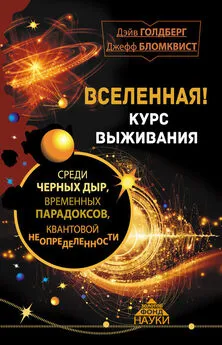
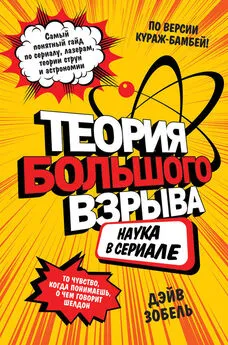
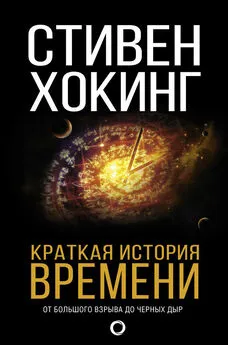
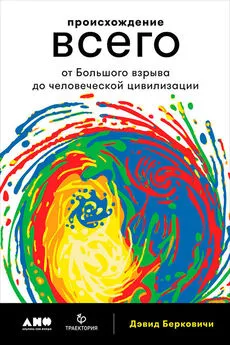
![Стивен Хокинг - Краткая история времени. От Большого взрыва до черных дыр [litres]](/books/1084852/stiven-hoking-kratkaya-istoriya-vremeni-ot-bolshogo.webp)
